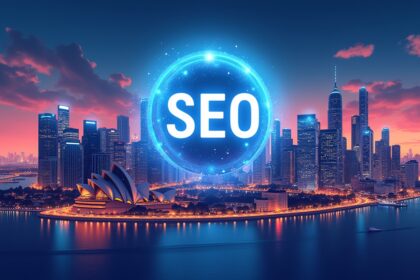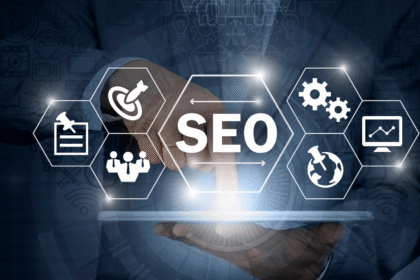In today’s fast-paced digital landscape, PPC digital marketing has become an essential strategy for businesses aiming to drive targeted traffic, increase conversions, and maximize ROI. But what is PPC in digital marketing exactly? And how does it work? This article breaks down everything you need to know about PPC — from the basics to the step-by-step process — to help you leverage this powerful advertising method effectively.
Read More:- What is an SEO Audit? (And How to Do SEO Audits as a Beginner)
What Is PPC in Digital Marketing?
PPC, or Pay-Per-Click, is a digital advertising model where advertisers pay a fee each time their ad is clicked by a user. Unlike organic marketing efforts that take time to build, PPC offers immediate visibility and targeted reach by placing ads on search engines, social media platforms, and other websites.
In PPC digital marketing, advertisers bid on specific keywords related to their products or services. When a user searches using those keywords, the ads appear on the results page or other digital channels. Advertisers only pay when a user clicks on the ad, making it a cost-effective way to drive qualified traffic.
Read More:- Complete SEO Audit Checklist: Step-by-Step Guide for Beginners
Why Is PPC Important in Digital Marketing?
- Instant Traffic: PPC campaigns can generate immediate visits to your website.
- Targeted Reach: Ads can be tailored based on demographics, location, interests, and device.
- Measurable Results: Every click, impression, and conversion is tracked for performance analysis.
- Budget Control: You set your maximum daily or monthly spend to avoid overspending.
- Competitive Advantage: PPC can help new or smaller businesses compete with larger companies.
Read More:- Click-Through Rate (CTR): Definition, Formula, and Analysis
How PPC Works in Digital Marketing: A Step-by-Step Overview
Step 1: Define Your Campaign Goals
Start by deciding what you want to achieve with your PPC campaign. Common goals include increasing website traffic, generating leads, boosting sales, or promoting brand awareness. Clear goals help shape your campaign structure and metrics for success.
Step 2: Conduct Keyword Research
Keyword research is critical in ppc in digital marketing. Use tools like Google Keyword Planner, SEMrush, or Ahrefs to find relevant keywords with the right balance of search volume and competition. Choose keywords that your potential customers are likely to use when searching for your products or services.
Step 3: Set Your Budget and Bids
Determine your daily or monthly budget for the campaign. PPC platforms operate on a bidding system, so you’ll decide how much you’re willing to pay per click (CPC) for your chosen keywords. Bidding strategies vary from manual to automated bidding options, depending on your experience and goals.
Step 4: Create Compelling Ads
Your ad copy must be relevant, engaging, and include a clear call-to-action (CTA). PPC ads typically consist of headlines, descriptions, and display URLs. High-quality ads improve your click-through rate (CTR) and quality score, which can lower your CPC.
Step 5: Select Your Target Audience and Platforms
Choose where your ads will appear — Google Search, Google Display Network, YouTube, Bing, Facebook, Instagram, etc. You can target users based on demographics, interests, geographic location, device type, and more. Precise targeting ensures your ads reach the most relevant audience.
Step 6: Launch Your Campaign and Monitor Performance
Once everything is set, launch your PPC campaign. Use analytics tools and the PPC platform’s dashboard to monitor key metrics such as impressions, clicks, CTR, conversion rate, and cost per acquisition (CPA). Continuous monitoring helps identify what’s working and what needs improvement.
Step 7: Optimize and Adjust
Based on the data, refine your campaign by adjusting keywords, ad copy, bids, and targeting. Testing different ad variations (A/B testing) and optimizing landing pages can significantly improve your campaign’s ROI.
Read More:- What Is On-Page SEO? How to Do On-Page Optimization
Common Platforms for PPC Digital Marketing
- Google Ads: The most popular platform for search and display ads.
- Bing Ads: Another search engine advertising option with often lower CPCs.
- Facebook Ads: Excellent for detailed demographic and interest-based targeting.
- Instagram Ads: Visual ads perfect for brand awareness and engagement.
- LinkedIn Ads: Ideal for B2B targeting.
Read More:- What Is On-Page SEO? How to Do On-Page Optimization
Conclusion
Understanding what is PPC in digital marketing and how it works is crucial for any business looking to increase its online presence quickly and efficiently. PPC digital marketing offers precise targeting, measurable results, and budget flexibility that can help you achieve your marketing goals faster than traditional or organic methods.
By following this step-by-step overview, you can launch, monitor, and optimize successful PPC campaigns that deliver real business value.
If you’d like, I can also help you with meta titles, descriptions, FAQs, or any other SEO extras for this topic! Would you like that?




